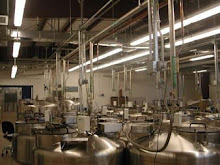Q: At any time during flight will the temperature inside the dry shipper exceed -135°C when the dry shipper is situated in an unpressurized cabin such as the cargo area, in contrast with passenger cabin?
A: While the liquid changes its saturation pressure there will be an increase in evaporation during ascent and a decrease during descent. Assuming that the cryogenic shipper does not run dry, which is not likely if properly charged, by this whole process the temperature should be basically unaffected. If anything the temperature will stay approximately normal during descent and drop lower than normal during ascent.
Q: Would the evaporation rate lower by adding 6 more racks?
A: It is not so. Since additional racks add more heat transfer paths to the LN2 in any case the evaporation rate would increase. If using aluminum racks this effect would be particularly noticeable as they offer much better thermal conductivity than stainless steel. The effect on evaporation rate would be minimal with stainless steel racks. Adding aluminum racks gives the user better sample security at the expense of higher liquid nitrogen usage and the positive side of this is that increased evaporation leads to lower vapor temperatures.
Q: Would the one with retrofit sleeve have the same temperature profile as a newly built cryogenic unit?
A: A unit with annular aluminum might not necessarily have the same profiled as the retrofit sleeve but would have a similar temperature profile. With normal vapor storage level settings the retrofit sleeve does not put any aluminum below the LN2 surface. So above the liquid it just moderates the gradient of the vapor. To the bottom of the inner shell the annular aluminum extends, adding up some heat to the liquid to increase convection. The SS shell slows the conduction of heat from the aluminum to the liquid minimizing the consumption impact in comparison to what it would be if the aluminum were in the storage chamber with the bottom submerged in liquid nitrogen.

No comments:
Post a Comment